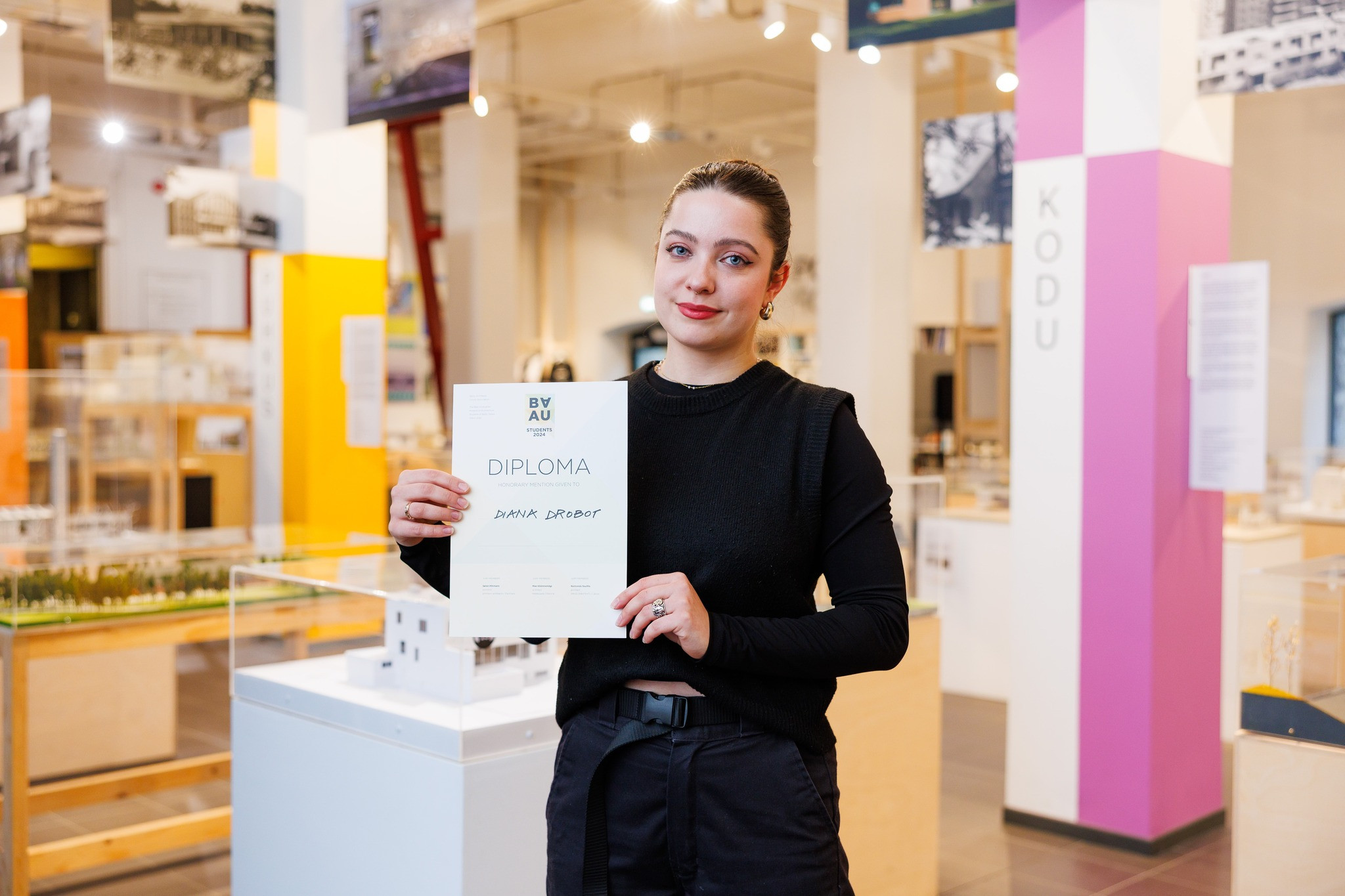Baltic Architects Unions Association Awards the Best Master’s Theses

BAUA Awards competition organised by the Baltic Architects Unions Association (BAUA) was won by the Master’s thesis of Katrīna Marta Peizuma from Riga Technical University on the experimental preservation of architectural heritage. Diana Drobot, a student of the Estonian Academy of Arts, earned the jury’s special mention for her exploration of the restoration and reuse of post-mining industrial landscapes.
The best graduation project in the Baltic states “Experimental Preservation of 20th Century De-industrial Architectural Heritage in the Circular Economy: Construction Materials Laboratory and the Museum of Unbuilt Architecture in Eksportosta” reconceptualises the prospective passenger terminal by the River Daugava. The author skilfully demonstrates how moving the terminal downstream would allow one car bridge to be left unbuilt and thus provide considerable savings.
The reason for moving the terminal lies in the provocative idea of a counterculture monument – the site includes a magnificent former warehouse building that could be protected as an important example of space, collection of materials and built environment. In this way, the author attempts to shift the meaningful core of Soviet industrial architecture away from politics and closer to the material needs of the society. The project brings business, manufacturing and research functions into the monumental concrete building and transforms it into a centre for circular economy and recycling materials. The thesis was supervised by Guntis Grabovskis.
The jury pointed out that Katrīna Marta Peizuma’s work explored various relevant topics, including circular economy, renovation as an alternative to demolition, and the destigmatization of Soviet architecture. “She took a very broad perspective, reconceptualising the role of the port in contemporary Riga while also considering the architectural details, functions and material. The thesis created a comprehensive vision that took into account the original purpose of the building while adding also a new original layer. In addition to the convincing discussion and presentation, her work was also aesthetically beautiful and accurately reflected the values of the New European Bauhaus of sustainability, the quality of spatial experience and social inclusion,” the jury stated.
Diana Drobot, a student of the Estonian Academy of Arts, received the jury’s special mention. Her Master’s thesis “SINKING & SHRINKING. Adapting to Subsidence on an Example of Shrinking Kohtla-Järve City” explores the need and possibilities of revaluation of post-mining industrial landscapes, based on the case study of the depleted oil shale mine in Kukruse. Once the resources are exhausted, a magnificent network of underground passages with shafts leading to the ground will remain. These are spaces with highly stable humidity and temperature levels that mankind has built and then quickly abandoned. The author proposes the revaluation, restoration and reuse of the underground industrial heritage. The work also deals with the post-mining town of Kohtla-Järve, the sinking of its buildings, the radical demographic shrinking and ways of adapting to the changes. The work was supervised by Laura Linsi, Roland Reemaa, Eik Hermann.
Diana Drobot’s thesis explored a very local, yet globally relevant topic: the phase-out of solid fuels, or more specifically, the oil-shale mining industry. “It is a timely discussion, addressing the need to rethink the future of declining industries in post-mining regions in an era of green energy and demographic decline. It was surprising and pointed to a somewhat overlooked topic. The presentation was also visually highly captivating, a work of art in itself,” the jury applauded.

BAUA Awards aim to highlight the best theses by the young specialists of the architecture schools in the Baltics. This year’s competition featured 14 projects from 7 architecture schools – Estonian Academy of Arts (EE); Tallinn University of Technology (EE); Kaunas University of Technology (LT); Vilnius Academy of Arts (LT); Vilnius Gediminas Technical University (LT); Riga Technical University (LV) and the RISEBA University of Applied Sciences (LV). The projects are available on this website and at the exhibition at the Estonian Academy of Arts until the end of October.
The prize-winning works were selected by an international jury: architect and the founder of pihlmann architects Søren Pihlmann from Denmark, architect Raimonds Saulītis (ARHIS ARHITEKTI) from Latvia, and architect Mae Köömnemägi (Makespace) from Estonia.
The umbrella organisation of the Baltic Associations of Architects has organised the competition and exhibition of young architects’ theses on a rotating basis since 2014. It provides a good platform for students to present their work internationally and compare the prevailing trends and methods in the universities in neighbouring countries. Also, the networking creates a solid foundation for future cross-border cooperation projects.
The event was organised by the Estonian Association of Architects in collaboration with the Architects Association of Lithuania and Latvian Association of Architects. The event was supported by the Latvian Culture Capital Foundation, Estonian Cultural Endowment, Knauf, Ruukki, Jures Glulam, Lumont, Darnu Group, Thermory, Koderus and Exterus, Estonian Academy of Arts.
Photos: Raul Mee

2025 © BAUA